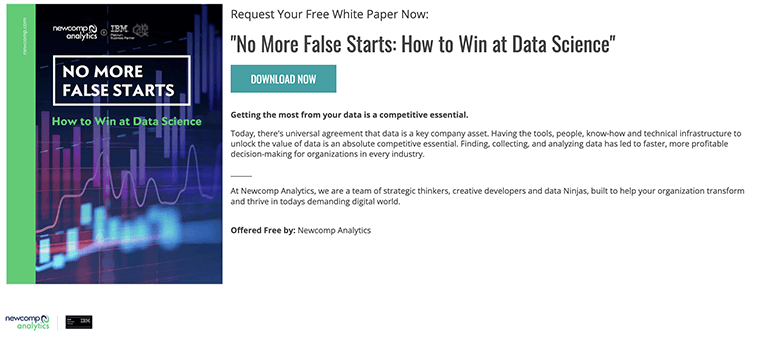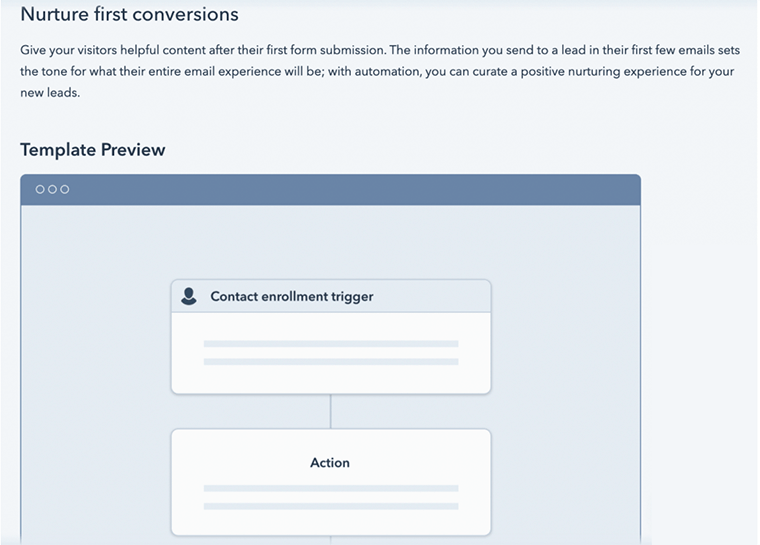
Lead generation isn’t easy. It requires a lot of time and effort and can be a constant struggle for marketers. A recent study from HubSpot reports that 61% of marketers rank lead generation as their number one challenge. Content syndication is one tactic that marketers can employ to enhance their lead generation efforts. By publishing your content on third party websites, you can expand your reach to target groups that typically wouldn’t be accessible to you. Getting your content in front of a relevant audience that fits your buyer persona will increase your chances of generating high quality leads. In the crowded tech market, content syndication can be a very successful lead generation tool, if you can avoid some common mistakes.
Content syndication seems like a simple concept, but to be successful in generating quality leads for your organization, it takes careful planning. We have compiled a list of 5 common mistakes that marketers make with content syndication campaigns and some tips on how to avoid them:
Many marketers make the mistake of distributing product-focused content rather than thought leadership or educational content. Tech professionals that are searching for content are researching possible solutions to a problem. They are looking for insightful, high value content that educates them about their business challenges and how they can improve their current situation. Your content can touch on your company’s solutions at a high level, but should not be promotional or come across as a sales pitch. By building trust with your potential prospects as a thought leader, you will increase your success in gaining them as customers as they move along their purchase journey.
To increase the effectiveness of your content, you should promote assets that align with your target personas and their stage in the buyer’s journey. The most popular types of content for syndication include white papers, eBooks, case studies, analyst reports, videos, blogs, as well as more interactive options such as webinars. It is also important to write clear, high-quality abstracts for your content. These summaries are used to promote your content, encouraging your target audience to take the next step and download the asset. Use the abstract as a way to highlight the value your audience will gain from getting access to your downloadable asset.
2. Getting too granular or too broad with targeting.
When targeting potential leads for your content syndication campaign, you need to find the sweet spot. You need to target a broad enough audience to ensure you have a chance of generating leads, while remaining targeted enough that you are generating quality leads at a reasonable cost. Targeting plays a key role in content syndication because you are only trying to attract leads that have a high chance of actually becoming your customers. Applying filters to the campaign will help you get relevant, high-quality traffic. Keep in mind, the more targeting parameters that you specify (i.e., the more filters you have), the higher your cost per lead will be.
Finding the sweet spot means figuring out which targeting criteria are absolutely critical to your campaign and eliminating those criteria that are not. You may be able to further qualify your leads without using excess filters, by including your targeted job title in the content title or abstract. For example, your asset title could be “Cyber Security Essentials for IT Managers”.
3. Generating top of funnel leads and immediately having a sales rep call them.
Even though leads generated through content syndication have provided you with their contact information and downloaded your content, they are not yet ready to speak to a sales representative. They are still in the early stages of their decision journey and need time to read and digest your content to increase their understanding and knowledge of possible solutions to their problem. You should continue to provide value and build a connection with these leads as part of a nurture campaign before giving them to sales for follow-up.
HubSpot defines lead nurturing as, “the process of building relationships with your prospects with the goal of earning their business when they're ready.” You can nurture these potential buyers by sharing helpful, relevant content that moves them through each stage of the buyer’s journey until they’re ready to be handed over to sales.

Nurturing the prospects you obtain through a content syndication campaign will help you create higher value, more loyal customers. In fact, Gartner reports that sales closed from nurtured leads tend to have a higher purchase value compared to those closed from non-nurtured leads.
4. Not having a lead nurture strategy in place before the leads are generated.
To maximize your success with the content syndication leads you generate, it is important to define and plan your follow-up strategy, before your content syndication campaign even begins. Your strategy should designate which content and messaging to use in your nurturing efforts, as well as the quantity and timing of lead touch points.
Segmenting or ‘scoring’ your leads will help you determine the most appropriate content to share with them and will also help you prioritize your leads and increase the rate at which those leads become customers. Leads are typically scored or assigned values based on attributes such as their profile (i.e., business title) and behavioural data (i.e., how they’ve interacted with your website and brand). After scoring the leads, you can rank them based on their interest in your solution and their suitability as a customer. Once your leads have engaged with enough content during the nurturing process or have a high enough score, they are ready to be passed along to the sales team.
Having a marketing automation platform is key to successful lead nurturing. Using technology to automate lead nurturing tasks will help you provide timely, personalized content to your leads based on their position in the buyer’s journey. Marketing automation will also help you increase your efficiency with other nurturing practices such as segmentation, scoring models and analytics, and reporting.
5. Stopping and starting campaigns.
Content syndication works best when it is set up as an ongoing strategy that you allocate a monthly advertising budget towards. You should be constantly filling the top of your funnel with new leads to ensure the rest of the funnel is functioning at optimal capacity. Since you don’t know when potential buyers are going to start their buying journey, having your lead generation machine working all the time will increase your chances of catching those buyers when they do decide to search for a solution. In addition, syndicating content on a regular basis will help ensure your brand remains visible and accessible to your target audience.
Interested in learning more about running a Content Syndication campaign? Book a meeting to find out how to get started.


.png?width=252&height=82&name=gameplanmktg_logo_white%20(1).png)
